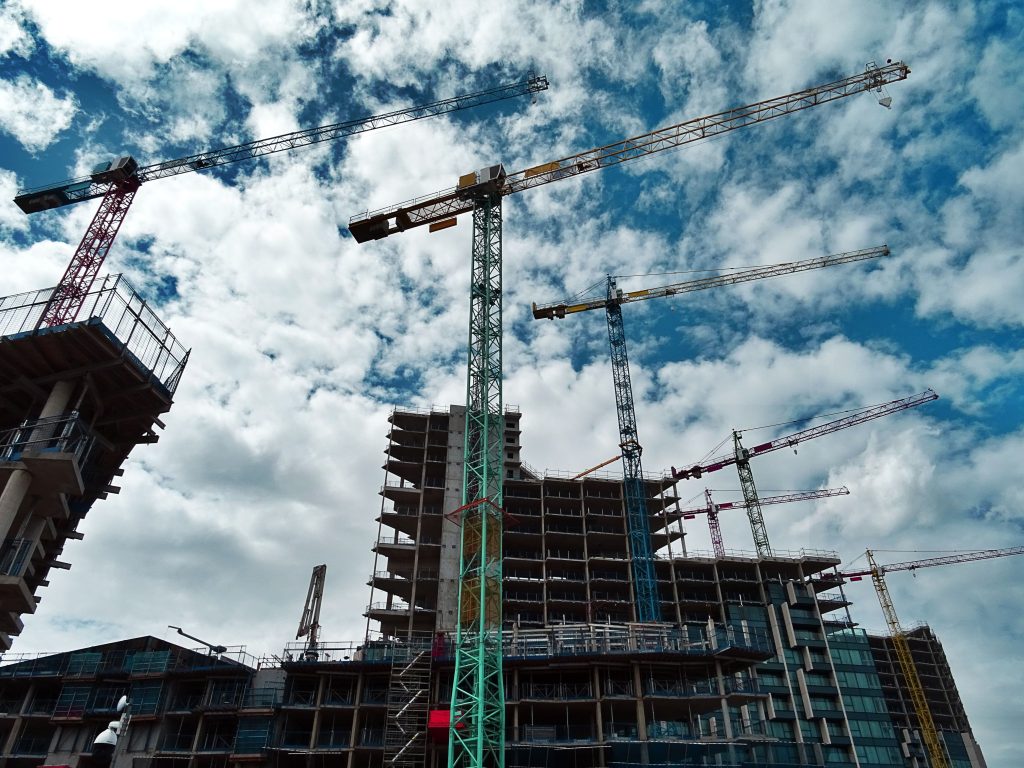Jooble takes a look at the pivotal role that BIM, robotics, and AI are currently playing in modern construction methods and examine how they will impact the workforce of tomorrow
From the implementation of Building Information Modelling (BIM) to the integration of robotics and artificial intelligence (AI), technology is transforming the way construction projects are planned, executed, and managed.
These emerging technologies not only offer unprecedented opportunities for efficiency, accuracy, and productivity, but have also led to increased construction vacancies and a growing demand for skilled professionals specializing in BIM, robotics, and AI.

The industry is innately innovative
From the most rudimentary tools such as hammers and chisels, to modern-day techniques and technologies, construction has always driven towards building bigger and better.
Today, we find ourselves at the cusp of yet another major transformative era: the era of digitalization, automation, and artificial intelligence which is revolutionizing the construction landscape.
From the implementation of BIM (Building Information Modelling) for collaborative project management to the utilization of robotics for labour-intensive tasks, as well as the integration of AI for data-driven decision-making, modern computer-driven technology is undoubtedly bringing about a seismic shift in the construction industry.
Building Information Modelling is a key strand of digital construction
Building Information Modelling (BIM) is the creation and management of a digital representation of a construction project. This digital model, known as the BIM model, encompasses detailed information about a project’s design, construction, materials, and operation.
BIM brings together various elements, including architectural, structural, and MEP (Mechanical, Electrical, and Plumbing) systems, into a single integrated platform.
BIM serves as a powerful tool for collaboration and communication among the various stakeholders involved in the project. By sharing a common digital model, architects, engineers, contractors, and other professionals involved in the construction process can work together more efficiently.
BIM enables real-time information sharing, allowing everyone concerned to visualize and understand the project’s intricacies, identify and resolve problems in the design or systems, and make informed and timely decisions.
The job of the BIM specialist is to collect and organise project data, ensure its accuracy and completeness, and develop the 3D models that form the foundation of the BIM process.
They collaborate closely with architects, engineers, and everyone else involved in the construction process, incorporating their input and requirements into the BIM model, ensuring that all components fit together seamlessly.
BIM professionals employ a range of software apps specifically designed for BIM, such as Autodesk Revit, ArchiCAD, Navisworks, and others. These software applications provide a comprehensive set of features to create, manage, and analyse the BIM model.

How bricklaying, concrete pouring, and materials are being delivered by robotics
The integration of robotic systems for repetitive activities in construction brings numerous benefits and cost savings to the industry.
For example, robots are capable of working tirelessly 24/7, without breaks. Furthermore, they can operate at a consistent pace, automating tasks that were previously performed by humans, thereby significantly speeding up the construction process.
Safety is another aspect. Construction sites often present hazardous environments, with the risk of accidents and injuries, especially in high-rise construction projects. Robots, equipped with sensors and advanced vision systems, can navigate these environments with precision, reducing the potential for human errors and minimizing the risk of workplace accidents.
Moreover, robotic construction workers can analyse complex data and adapt to changing site conditions, due to the integration of AI algorithms. These algorithms allow robots to process information in real time, make intelligent decisions, and adjust their actions accordingly. This has the added benefit of reducing the need for constant human supervision.
While initial investment costs for robotic systems may be significant, the long-term benefits outweigh them.
Applications of artificial intelligence in construction
Artificial Intelligence enables advanced data analytics, predictive modelling, and robotic automation. AI systems are capable of analysing large volumes of construction-related data. By processing and interpreting these vast amounts of project data, including historical records, design documents, and sensor data, AI systems can identify patterns, trends, and correlations.
This enables project managers and stakeholders to gain a deeper understanding of the project’s dynamics, anticipate potential risks and problems, and make data-driven decisions to optimise project planning, scheduling, and resource allocation.
AI’s impact on safety in construction is another factor. Intelligent video surveillance systems, powered by AI algorithms, can analyse real-time footage from construction sites.
These systems can identify potential hazards – such as workers in dangerous zones or engaged in unsafe activities – and send alerts to supervisors or safety personnel.
AI-driven predictive maintenance systems can also have a beneficial impact on construction equipment. By continuously monitoring equipment health and performance using sensor data, AI algorithms can identify early signs of potential failures. This allows maintenance teams to schedule proactive repairs or maintenance, minimizing equipment downtime, reducing repair costs, and improving operational efficiency.
New roles in the digital era of construction
The integration of technology in construction has created a demand for a new wave of skilled professionals.
Job roles such as BIM managers, robotics technicians, and AI specialists have emerged, requiring specialized knowledge in these fields.
This has opened up opportunities for individuals to upskill their qualifications and pursue rewarding careers in the evolving construction industry of the future, such as:
- BIM Managers/Coordinators: these professionals are responsible for overseeing BIM implementation, managing data integration, and coordinating with project stakeholders.
- Robotics Technicians/Engineers: Robotics Technicians design, develop, and maintain robotic systems used in construction, ensuring their efficient operation and integration into existing workflows.
- AI Specialists/Data Scientists: Includes the analysis of construction data, developing AI algorithms, and implementing predictive modelling solutions to optimize project performance.
- Construction Technologists: Bridging the gap between technology and construction, providing expertise in implementing and integrating BIM, robotics, and AI systems.
Looking to the future
As technology continues to advance, the construction industry will undoubtedly unlock new possibilities which will reshape the way we build structures today and in the future.
Currently, BIM, robotics, and AI offer tremendous opportunities to enhance project efficiency, reduce costs, improve safety, and much more.
However, the successful adoption and implementation of modern technologies depend on a skilled workforce capable of harnessing their potential.
You can learn more about new roles in UK digital construction on Jooble.



![[VIDEO] Making DorTrak reports easy to read with Fireco Inspecting fire doors at Fireco, firedoor technology, 2023](https://www.pbctoday.co.uk/news/wp-content/uploads/2024/04/JPZ_2364-web-218x150.jpg)
![[VIDEO] Re-flow Field Management review by Traffic Management Installations When TMI began subcontracting for councils and government bodies, they wanted to present their site reporting in a more professional manner](https://www.pbctoday.co.uk/news/wp-content/uploads/2025/03/TMI-Media-1-218x150.png)






![[VIDEO]Self-climbing robot Schindler RISE used to install lifts on Skanska site Skanska's all-electric 105 Victoria Street development in central London is seeing the first UK use of Schindler's Robotic Installation System for Elevators (Schindler RISE)](https://www.pbctoday.co.uk/news/wp-content/uploads/2025/03/schindler-rise-hoistway-fixation-218x150.jpg)


